Today marks the official launch of the Standard Comic Script (SCS), which was built by cartoonist, editor, and educator Steenz and writer, artist, and Z2 Comics Senior Editor Camilla Zhang.
The SCS template aims to demystify the mechanics of the comics industry, provide a foundation that can be customized for the needs of each individual creative team, and help facilitate the establishment of an industry standard for scripting that will eradicate miscommunication. Best of all, it’s available for everyone to use at no cost!
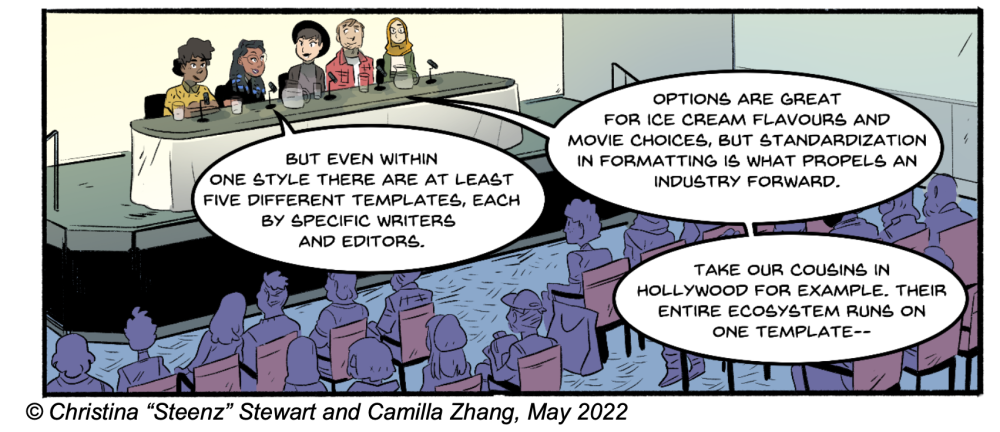
The Standard Comic Script (SCS)
Camilla and Steenz worked with a variety of other industry professionals, including David F. Walker, Whitney Leopard, and Ngozi Ukazu in order to synthesize scripting techniques into a template that can provide a common foundation and open the door for more effective communication in the comics creative process.
In a quote provided to the Beat, Ukazu shared these thoughts about the SCS: “Steenz and Camilla’s work to standardize a crucial step in graphic novel making not only draws from their years of experience in comics but also pushes the field of comics forward.”
To learn more about the conceptualization and development of the SCS, you can watch this interview with Camilla and Steenz, hosted by Prism Comics and edited by Ted Abenheim:
Available to download now
If you’re interested in utilizing the SCS, you can download the template from either Steenz’s website or Camilla’s website right now.
Have you had the chance to check out the SCS? What are your thoughts on the template? Will you be utilizing it in future collaborative sequential narrative projects?
The Beat wants to hear from you! Give us a shout-out, here in the comment section or over on social media @comicsbeat, and let us know what you’re thinking.


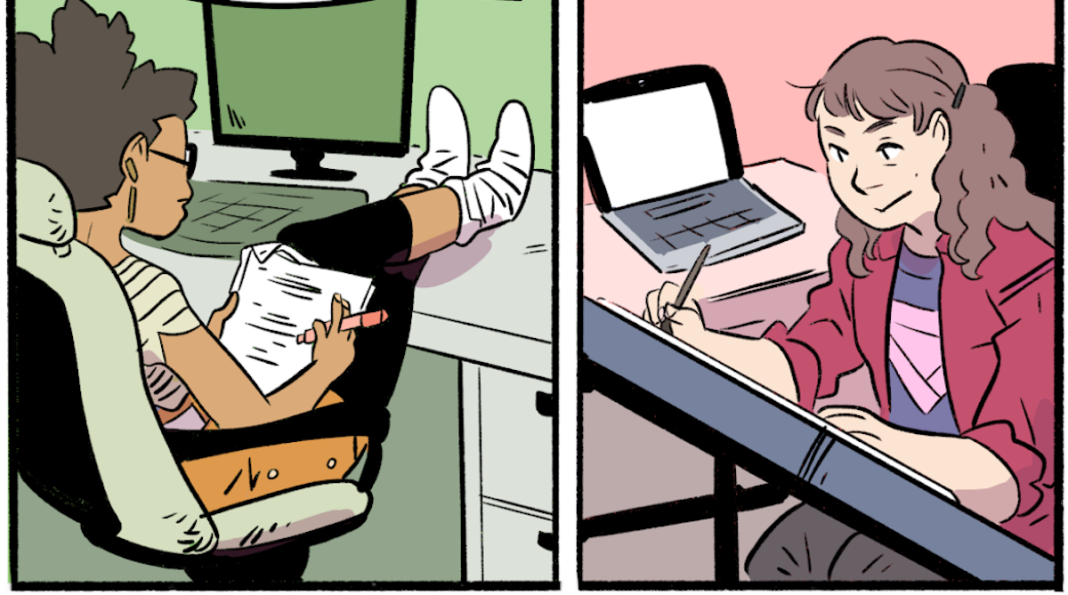
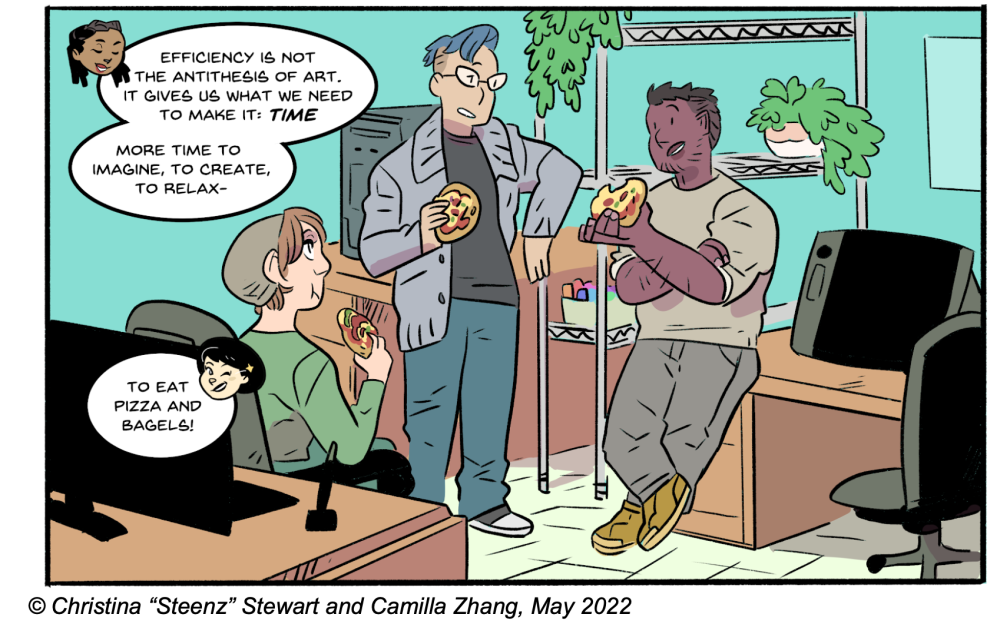
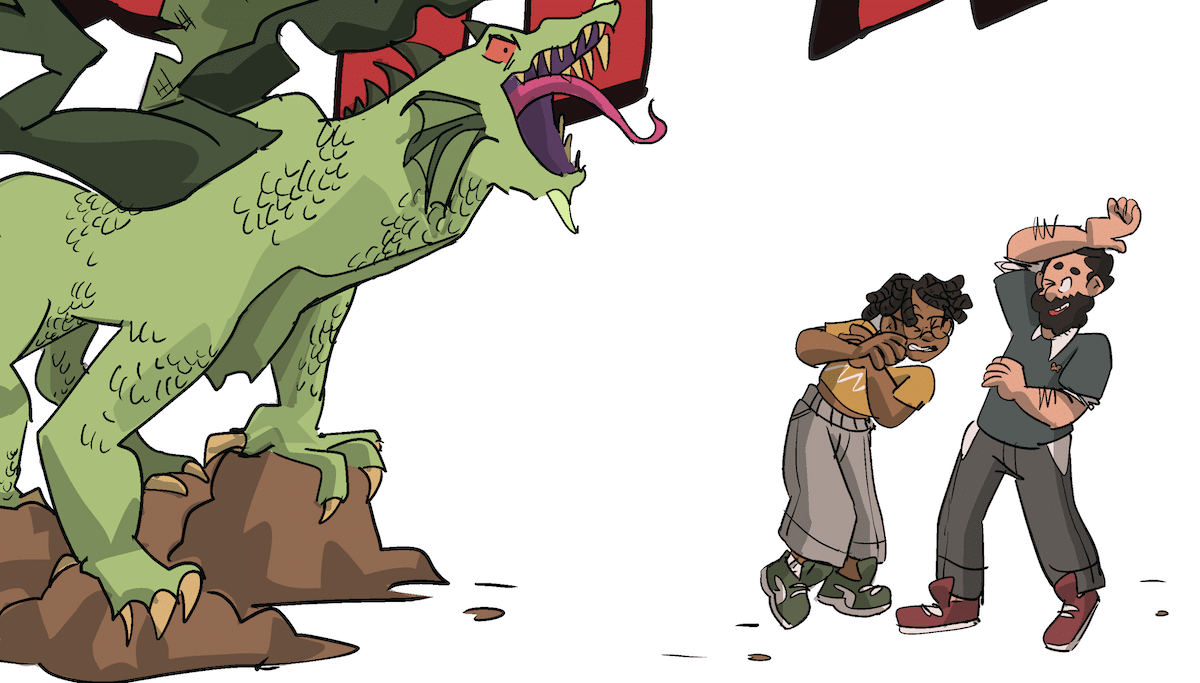
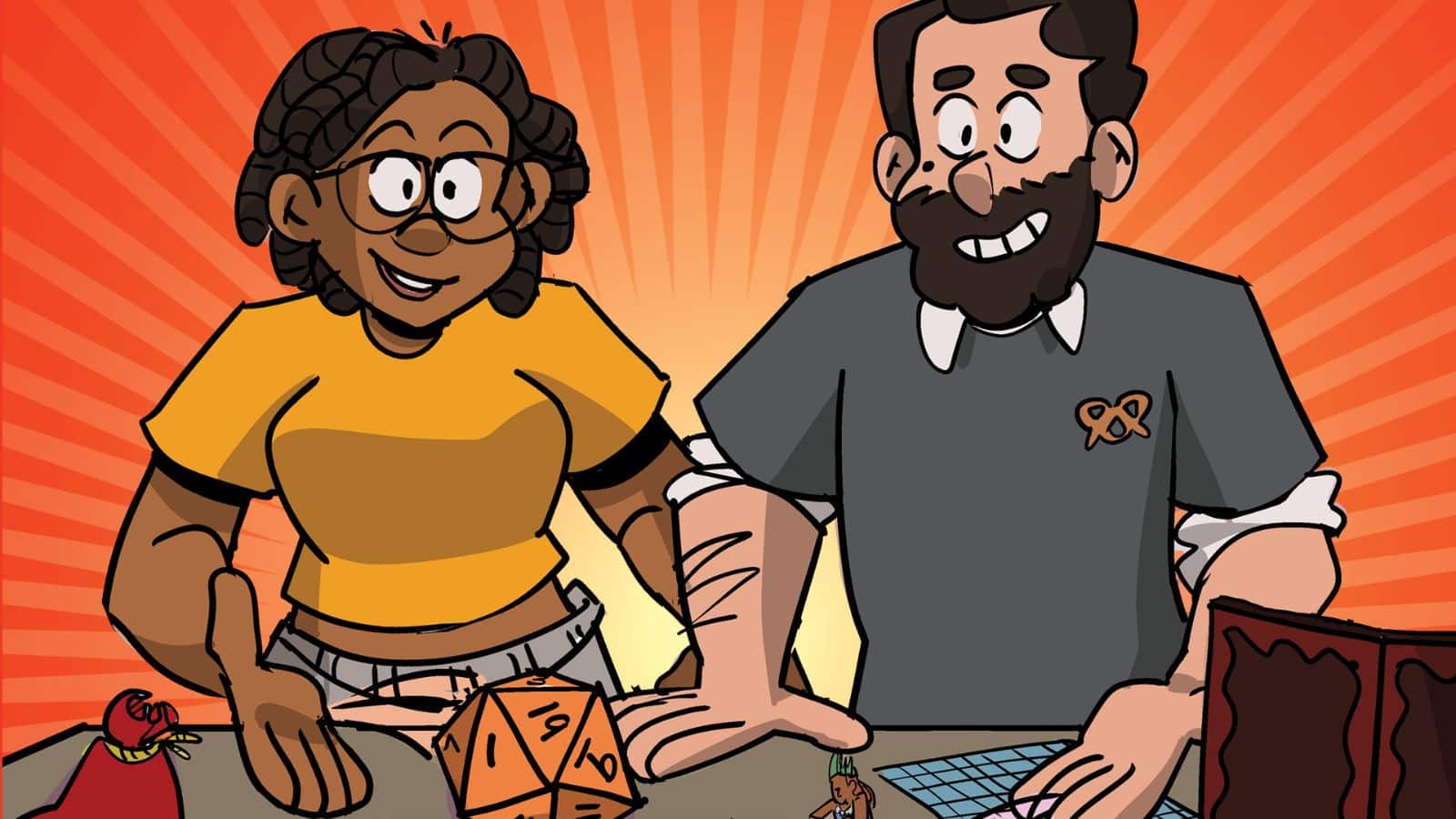




A few years back, Fred Van Lente shared on his Twitter the way he does scripts. It was clear, to the point, and filled with good ideas. But most of all, it wasn’t two things: a blatant copy/paste of any movie screenplay template, nor it had this smug pretention that it knew better from people that are presumably in the business.
There are a lot of things about this that seem like it’s designed to suit editors’ needs rather than creators, but that thing that tells you which side the page is on? That’s good. I want that.
Nope. Formatting center text for dialog means your script is full of returns which makes for a TON of extra work for letterers who have to go in and delete them all.
Back in college, I worked with a similar format in my comic writing course. It wasn’t anywhere as clear as this SCS format and I like that the style format is familiar to a screenplay since I also work in Animation as a storyboard artist.
When I started writing my comic scripts, I modeled them after screenplays because that’s what I was used to and found myself taking longer to decide on everything. So I recently revisited the comic format for a one-shot comic and it made visualizing the layouts and thumbnails waaaay faster than usual method. If that’s the case, I’ll definitely give this new SCS format a try on my upcoming projects.
A worthy and potentially useful effort, I think, depending on the setting. Seems similar to Final Draft in format and function. Screenplays are formatted the way they are so that everyone involved in a production–not just director and actors but crafts and crew–can see what they’re supposed to do. SCS could play that role in comics production.
At the same time, I’m thinking about pounding square pegs into round holes and wondering how someone like Alan Moore, whose scripts are dense treatises going back to the dawn of time, would adapt to a standard like that. Most likely he’d tell ’em to take a leap. The old “Marvel Method” wouldn’t have fit. This might be fine for creators I think of as “words first” cartoonists, but I know “pictures first” cartoonists who discover their story in the process of drawing it for whom it wouldn’t work at all.
Personally, I find Alison Bechdel’s “Visual Scripting” more interesting because it gives images as much weight as the text. You develop both simultaneously, and are thinking about layout and visual beats from the start. The downside is that it’s a lot more complex to apply than just typing, and not every writer will have a sense for layout, or even think that’s their job.
Comments are closed.